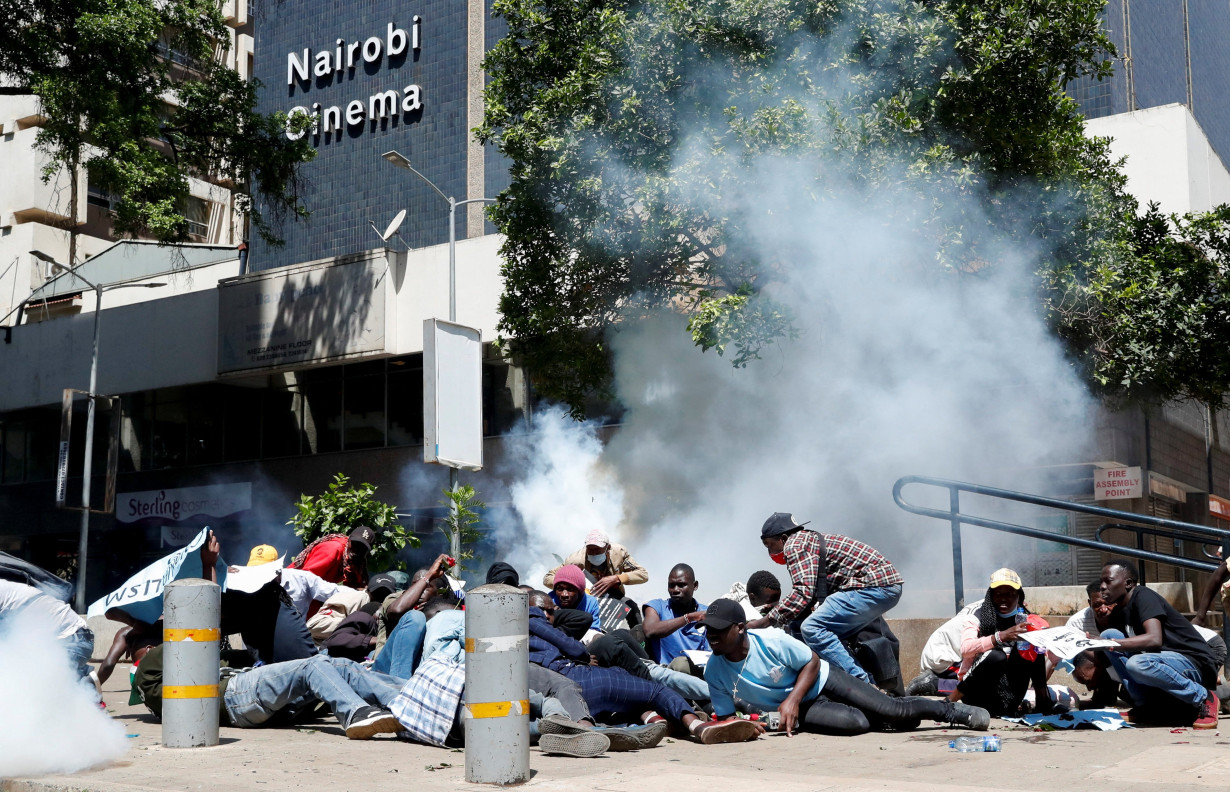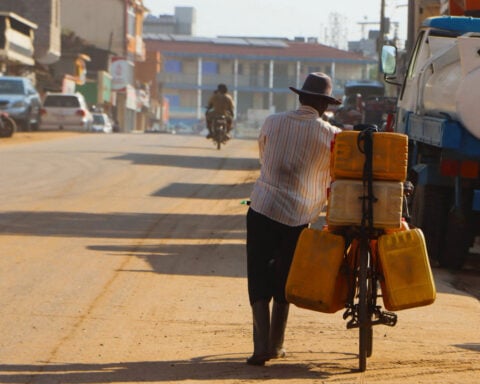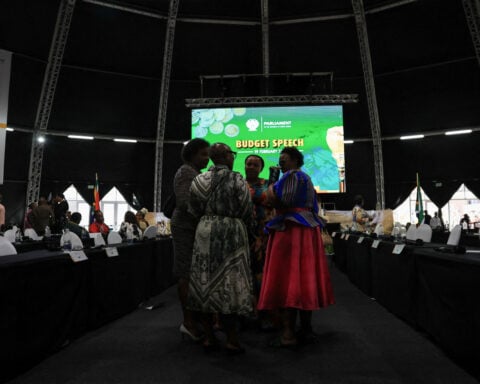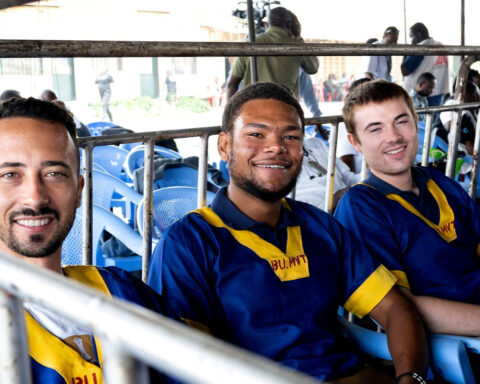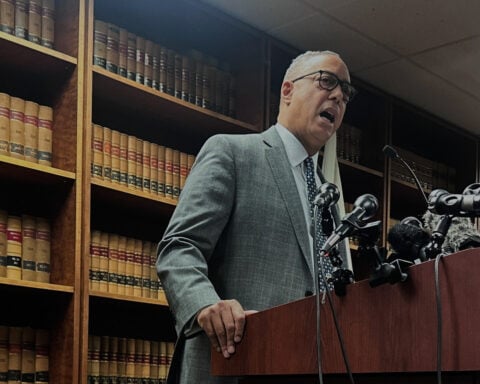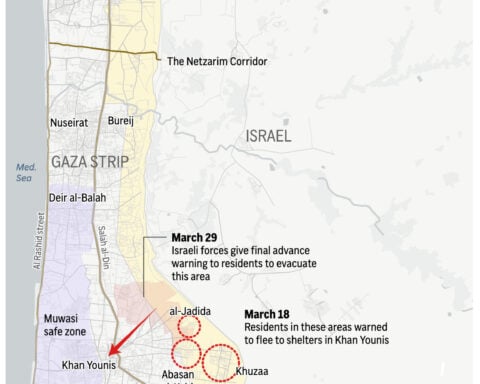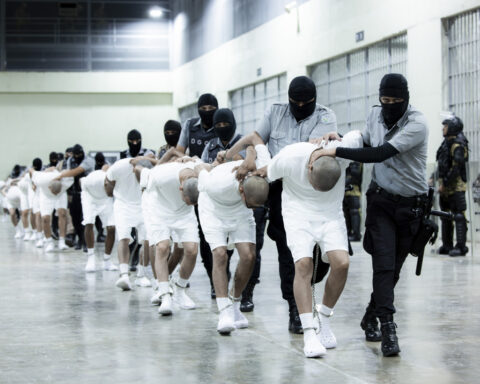By Ammu Kannampilly
NAIROBI (Reuters) - Nineteen-year-old Charles Owino was killed by a gunshot to the head during a day of anti-government protests near Nairobi in July, according to an autopsy report seen by Reuters.
But Kenya’s police recorded his death as a road accident, his brother said, citing the morgue logbook he was shown after he visually identified Owino's body. Reuters has not seen a copy of the logbook entry.
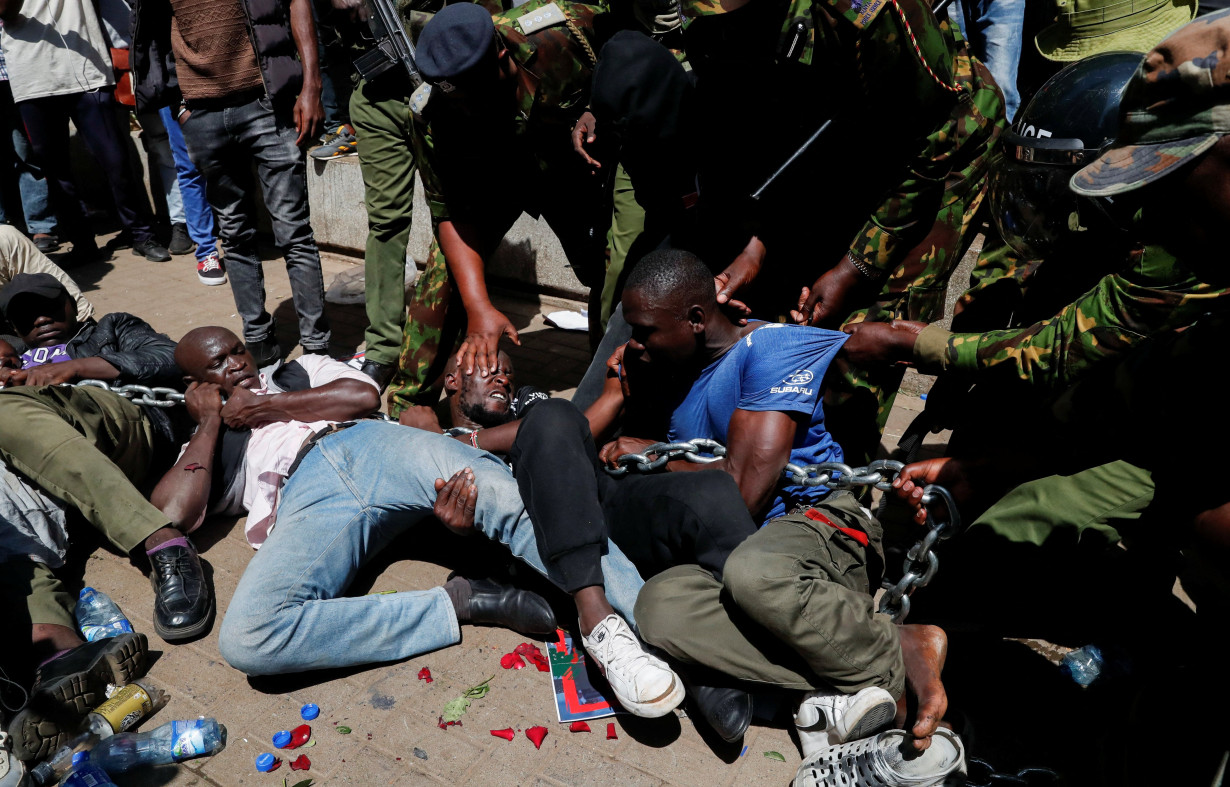
In a separate case, police said Shaquille Obienge, 21, died in a road accident, his father told Reuters, also citing an entry in the morgue logbook.
But Obienge was shot in the neck, according to the government's own autopsy report conducted after his father visually identified his body. Obienge, who was also a protester, died the same day as Owino, in the same Nairobi suburb of Kitengela, according to the report seen by Reuters.
In Kenya, morgue logbooks record the cause of death reported by police when they bring in bodies, with public pathologists usually only performing autopsies once bodies are identified by relatives.
Reuters spoke to three police officers who work in a unit deployed during protests who said that Kenyan police at times mischaracterize deaths caused by officers as “death by accident”, “mob justice” or “drownings” in morgue logs to cover their tracks. The officers requested anonymity to speak about sensitive matters.
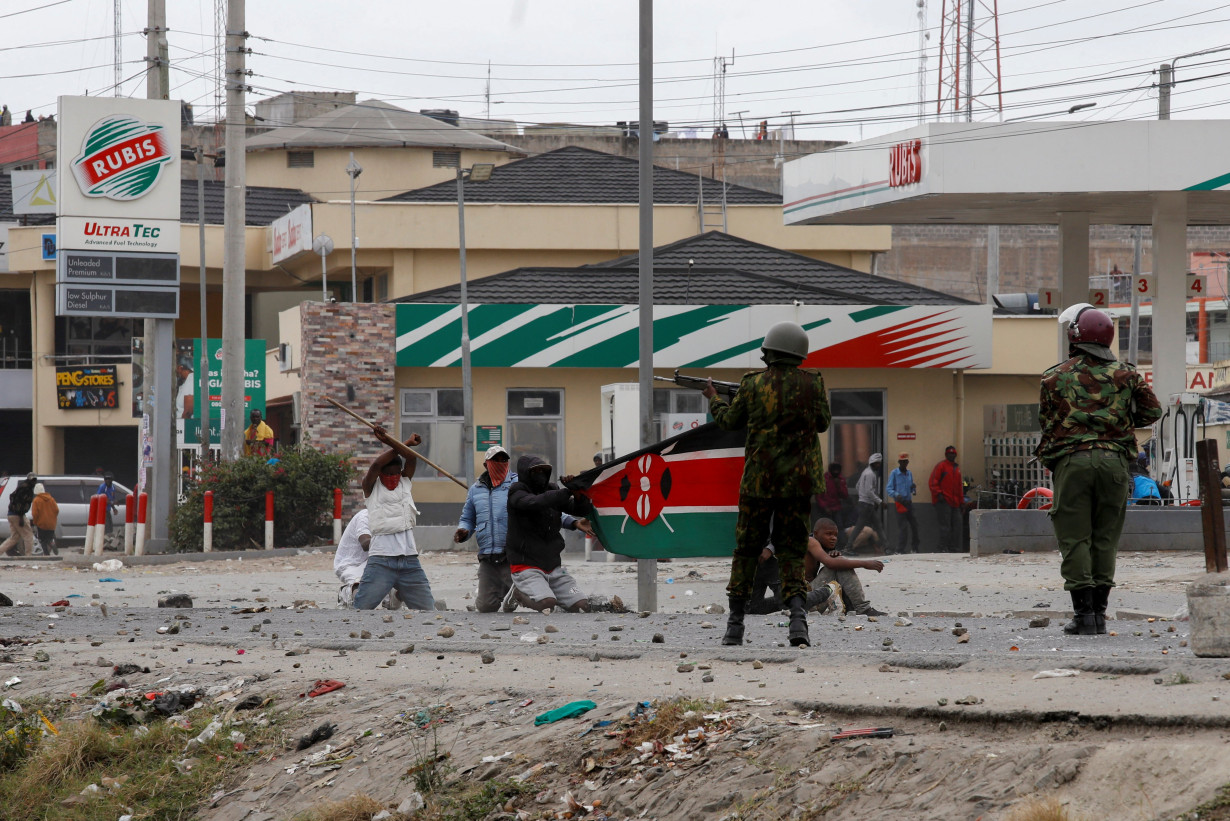
For this story Reuters reviewed copies of four autopsy reports conducted by public pathologists after family members identified Owino, Obienge and two other young men killed in or after the anti-government protests that rocked the country in June and July.
Relatives described discrepancies between the causes of death recorded by the police in morgue logbooks and the autopsy reports in three of the cases.
All the bodies were tagged with a number that was also entered into the logbook by morgue workers. Although Obienge and Owino were logged without a name when they were admitted to the morgue, their relatives matched the number on the body with the logbook entry and could see the cause of death declared by police.
Reuters was unable to independently verify the allegations made by the families.
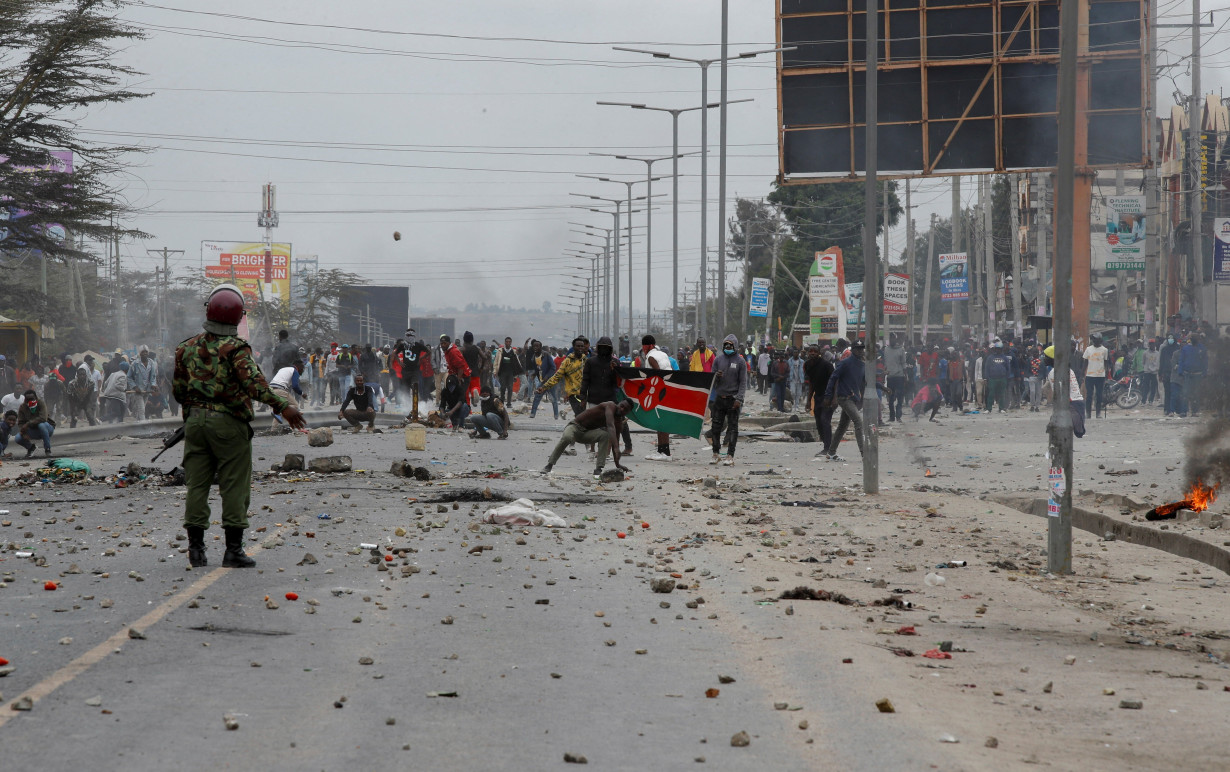
The third death, of Kepher Odiwuor Ouma, 24, was blamed by police on “mob justice,” his family said, citing the morgue logbook, which named him. However, two eyewitnesses told Reuters Ouma was picked up by police at a protest on July 3 and beaten unconscious.
The battered body of the fourth protester, Denzel Omondi, was found on July 6 in a pool of water nine days after he disappeared, with the autopsy recording his death as drowning.
The National Police Service did not reply to questions about the specific cases examined by Reuters.
The offices of Kenya’s President William Ruto, his deputy president and the interior ministry did not respond to requests for comment.
Thousands of young Kenyans took to the streets in nationwide protests against tax hikes and political corruption, starting in late June. Deputy President Kithure Kindiki has said 42 people were killed during a police response that rights groups say involved firing live rounds.
Some prominent rights groups have accused Kenyan authorities of a cover-up of dozens of alleged police killings, unexplained abductions and illegal detentions related to the protests, which became known popularly as the Gen-Z protests because of their youthful demographic.
Kenya’s National Commission on Human Rights, a government-funded body, recorded 82 cases of enforced disappearances in the period between the protests starting in June and December, compared to just nine cases in the previous 18 months. Of those 29 remain unaccounted for, the commission said in a statement on Dec. 26.
Some of the alleged abductions were linked to a low-profile unit of Kenya’s Directorate of Criminal Investigations, a police department, according to the three officers and Human Rights Watch associate Africa director, Otsieno Namwaya, speaking to Reuters. Namwaya identified the unit as the DCI’s Operation Action Team (OAT), citing contacts within the DCI.
In an interview with Reuters, Resila Onyango, a spokesperson for Kenya’s National Police Service, said she had "no idea" about OAT’s activities or the allegations levelled against it.
In response to a question about allegations of police killings and illegal detentions, Onyango said formal complaints would be investigated by the Independent Policing Oversight Authority (IPOA) watchdog, which probes cases of police brutality.
In July, IPOA released a statement saying it had "registered 10 complaints of unlawful arrests, abductions, and disappearances", including the abductions of Omondi and another person mentioned in this story. Four people Reuters spoke to said they or their relatives had filed complaints with IPOA.
IPOA did not respond to requests for comment.
Photos taken by Reuters during the July 16 Kitengela protest show Owino’s body on the street, blood sprayed across the ground near his head. A police officer stands in the foreground, brandishing a rifle. Reuters was able to identify Owino by comparing the clothes he was wearing in the protest and the postmortem photos, which also show a head wound.
Deputy President Kindiki, who was serving as interior minister in charge of police at the time of the protests, told reporters in December that the protests “unfortunately led to loss of life.” He said some of those lives were lost “through police action,” adding that police were allowed to use lethal force in exceptional circumstances.
In a Dec. 31 speech, Ruto acknowledged “instances of excessive and extrajudicial actions by members of the security services.”
MORGUE LOGBOOKS
For this story, Reuters reviewed three months of logbook entries covering the protest period and its aftermath at the Nairobi Funeral Home, Kenya’s busiest public morgue, which is where police take unidentified bodies and is run by the city’s local government. Access to the logbooks was provided by the head of the morgue, a doctor.
The morgue head and the chief of the Nairobi county health department declined requests for interviews.
Between June 25, the day of the parliament protests, and Sept. 30, police recorded just nine fatalities as gunshot deaths, less than half the gunshot deaths recorded in those months a year ago, the review of the logs for both periods showed. The logbooks do not name individuals unless police provide their identities. Only one gunshot death was recorded between June 25, the most violent day of protest, and June 30.
In the same three-month period, the morgue logs reveal 94 deaths attributed by police to mob justice and drownings, compared to 59 in the same period a year earlier.
In total the morgue received 694 bodies from police in the period, up by a quarter from the year-before period.
Asked by Reuters about these findings, Irungu Houghton, executive director at Amnesty International’s Kenya chapter, said the low number of gunshot deaths recorded, “leads us to think that there may have been an attempt to cover up the number of bodies that died as a result of police shootings,” at the protests. Reuters couldn’t independently confirm this.
CLOSE RANGE
When restaurant manager George Obienge went to the Nairobi morgue to search for his son Shaquille six days after the Kitengela protest, staff did not let him in at first and told him all the bodies received recently were victims of road accidents, he said.
Eventually he managed to enter and identified Shaquille, he said. The youth had a large wound on the side of his neck, photos he shared with Reuters show.
The autopsy later concluded Shaquille was killed by "gunshot at close range," according to photos of the report shared with Reuters by Obienge. Reuters was unable to identify the pathologists who signed three of the autopsies reviewed for this story. The fourth pathologist said he was not authorised to speak to the media.
In the third case, Ouma was walking with friends during a protest on July 3 when some were grabbed by uniformed and plain-clothed police who bundled them in a van and beat them, two friends who were at the demonstration and Ouma’s uncle told Reuters.
Most were released, but Ouma was unconscious and badly hurt and police took him away, said one of his friends, who was also initially detained.
Police delivered his body to the Nairobi morgue five weeks later, saying he had been found "lying dead" on the road, according to a photo of a postmortem form signed by police and shared with Reuters by Ouma’s uncle. It gave the cause of death as multiple injuries due to blunt force trauma. In the morgue logbook, the cause of death, listed alongside his name, was recorded as “mob justice,” his uncle said. Reuters has not seen the logbook entry.
POLICE BRUTALITY
For years the DCI's Special Service Unit (SSU) faced hundreds of allegations, with Amnesty International's Kenya chapter linking it to most of over 500 extrajudicial killings and dozens of enforced disappearances between 2019 and Sept. 2022.
In October 2022, weeks after taking office, President Ruto disbanded the SSU, accusing it of "killing Kenyans arbitrarily". Neither former president Uhuru Kenyatta nor police officials have responded publicly to Ruto’s allegations.
In its place, another DCI squad has been involved in the clampdown on protesters, including killings and abductions, the three police officers told Reuters.
Called OAT, the squad has absorbed former SSU members, HRW’s Namwaya said, citing police contacts. Reuters could not establish OAT’s involvement in any crimes.
The police did not respond to requests for comment about OAT’s activities or size.
MISSING
The body of university student Omondi was found in a pond at an abandoned quarry on Nairobi's outskirts. The autopsy report, prepared by a public pathologist after his body was identified by his father James Otieno, detailed hyperinflated lungs as well as bruises on his head, neck, right forearm and knees. Otieno shared a copy of the report with Reuters.
"Prior to drowning, something else happened,” Otieno, a 55-year-old private security officer said, without elaborating. He added that IPOA had promised an investigation. IPOA did not respond to Reuters questions about Omondi’s case.
Reuters spoke to seven people who were either kidnapped themselves or who said relatives had gone missing. All six abductees were either protesters or politically active, including high-profile rights activists Bob Njagi and Aslam Longton, who took part in the protests and were each held for over a month. Three relatives said family members were grabbed by armed men from their homes or from the street after protests. One is still missing.
One of the policemen deployed during the demonstrations said he worked alongside undercover officers who mingled with crowds to identify protest ringleaders and get their phone numbers so they could track their movements and organise abductions. The police did not respond to questions about these or other allegations made by the officers interviewed by Reuters.
Law student Joshua Okayo was grabbed off the street in late June by men who beat him with metal rods and asked him why he had attended the protests at parliament, he said. Before he was released two days later, he said his captors made him an offer.
"They asked me, 'what if you work for us? We help people who give us information about the protest movement'," he said. Reuters could not verify whether Okayo’s captors were police.
(Reporting and writing by Ammu Kannampilly; Additional reporting by Vivianne Wandera, Edwin Okoth, David Lewis and Humphrey Malalo in Nairobi and Fred Ooko in Homa Bay; Editing by Frank Jack Daniel)

 Trump has begun another trade war. Here's a timeline of how we got here
Trump has begun another trade war. Here's a timeline of how we got here
 Canada's leader laments lost friendship with US in town that sheltered stranded Americans after 9/11
Canada's leader laments lost friendship with US in town that sheltered stranded Americans after 9/11
 Chinese EV giant BYD's fourth-quarter profit leaps 73%
Chinese EV giant BYD's fourth-quarter profit leaps 73%
 You're an American in another land? Prepare to talk about the why and how of Trump 2.0
You're an American in another land? Prepare to talk about the why and how of Trump 2.0
 Chalk talk: Star power, top teams and No. 5 seeds headline the women's March Madness Sweet 16
Chalk talk: Star power, top teams and No. 5 seeds headline the women's March Madness Sweet 16
 Purdue returns to Sweet 16 with 76-62 win over McNeese in March Madness
Purdue returns to Sweet 16 with 76-62 win over McNeese in March Madness
